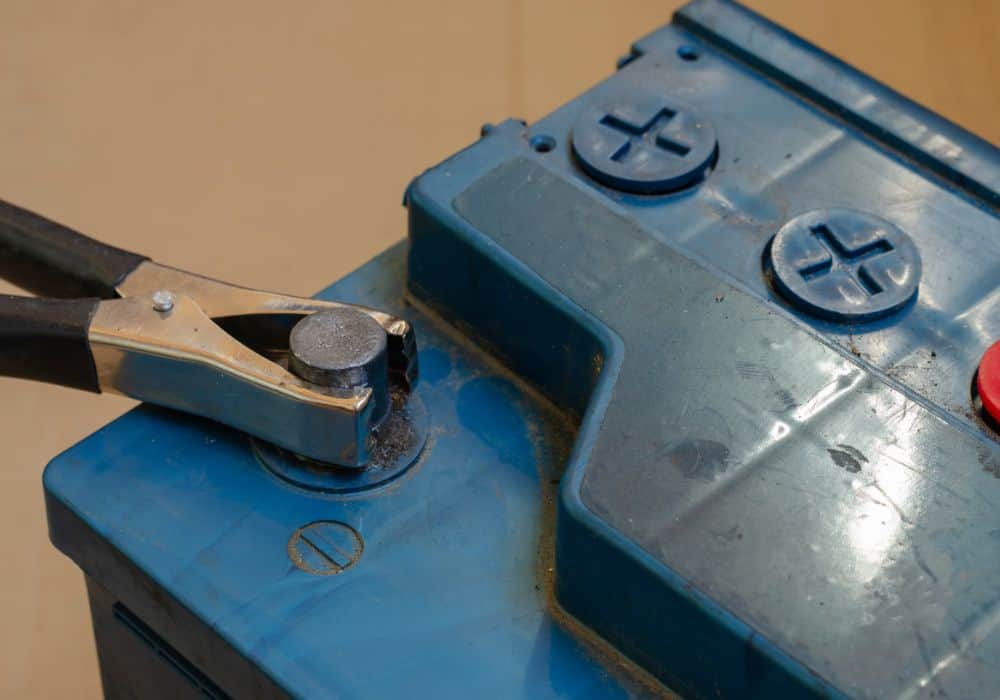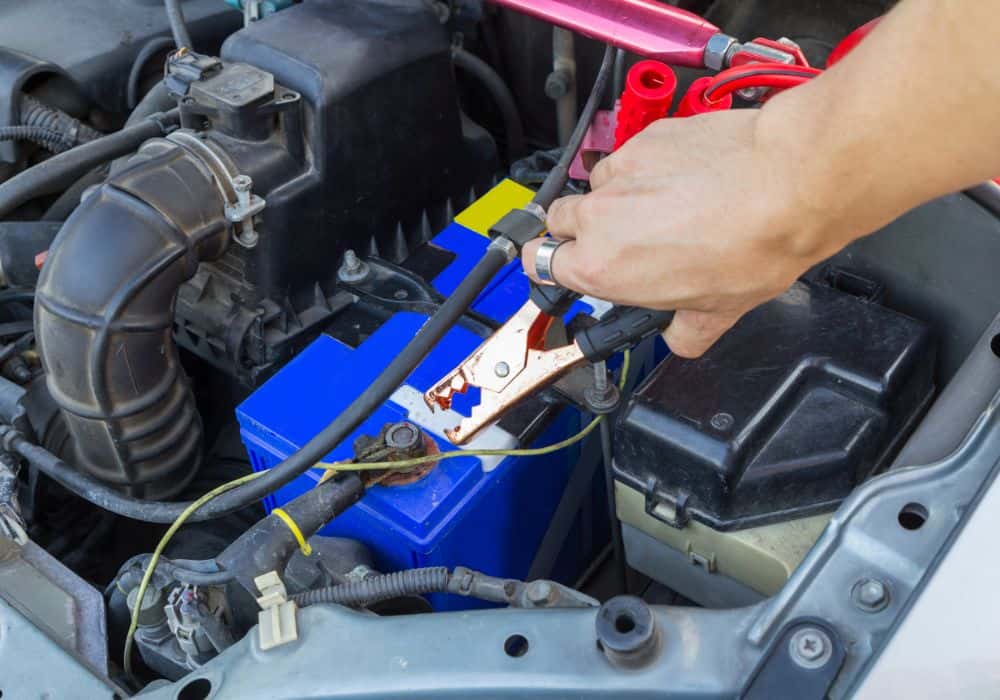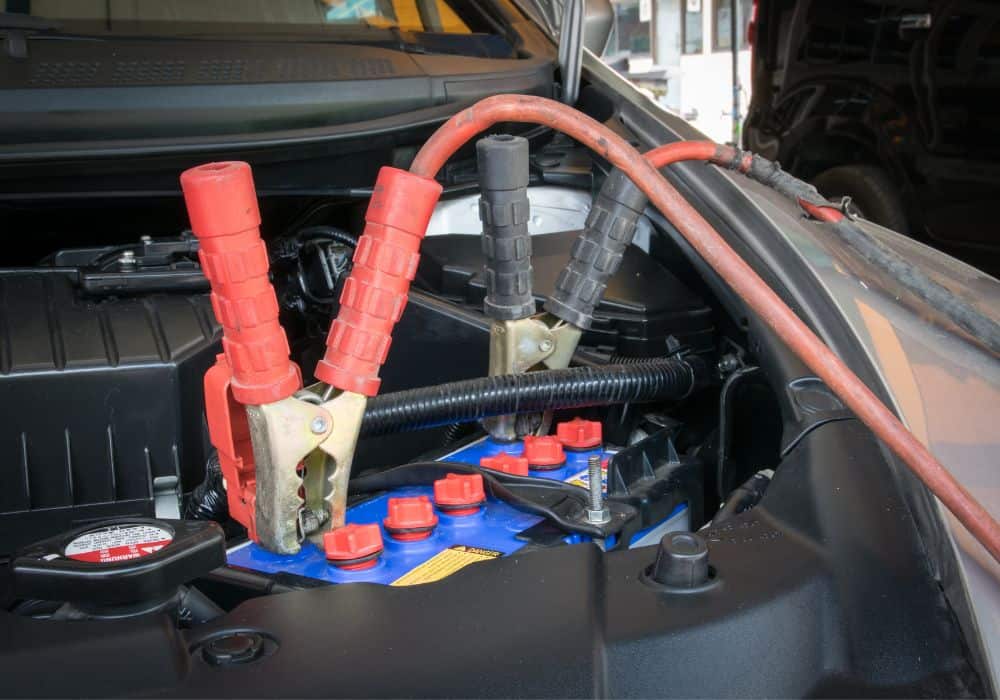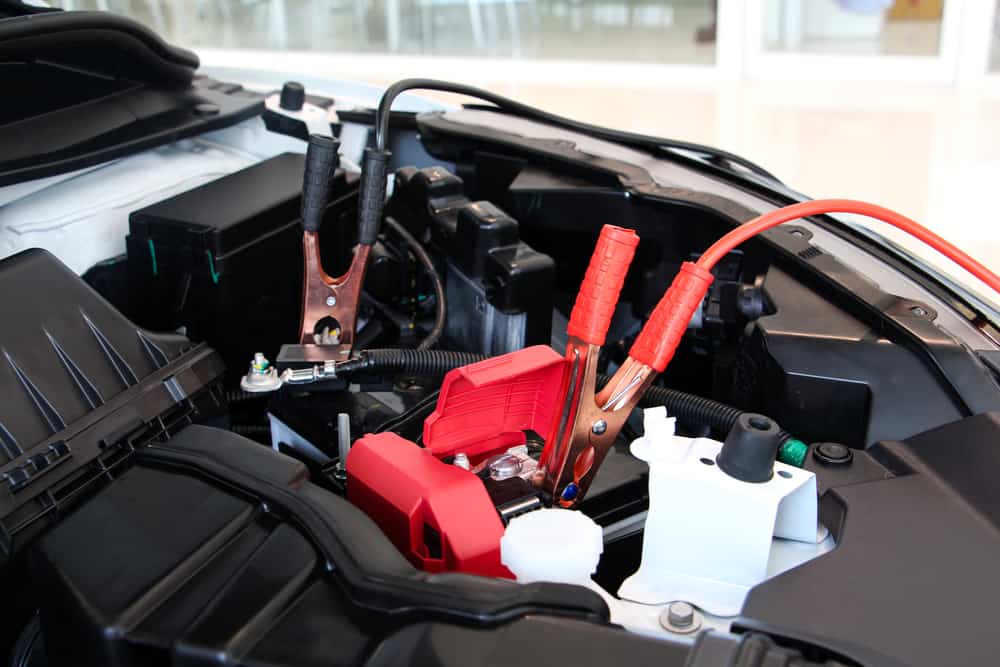Do you know what could happen if you connect the cables wrong to charge your car’s battery?
If you know how to do it correctly, you will not have any problems. However, the inconvenience comes when you do not know how to do it. You may cause severe damage to your car and the donor car that is helping you recharge the battery.
In this article, we will cover everything you need to know about how to recognize the positive terminal and the negative terminal on your battery.
In addition, we will provide you with precise instructions on what is the best way to charge your battery and many more tips so that you can maintain the performance of your battery and take care of the life of your car.
Table of Contents
What happens if I misplace my battery terminals?
Putting the jumper cables in the wrong way is a mistake that many people make and it causes accidents more often than you can imagine. When we connect the positive cable of one battery to the negative side of a dead battery for jump-starting, a huge increase in electrical current is generated between the two.
The batteries are full of hydrogen inside. This is why if you increase the current there will be a significant increase in heat that can lead to melting the internal or external parts of the battery cables, while the gas pressure can break the casing or make it explode.
Another damage can occur in the car battery terminals, which are not designed to withstand the increase in electrical current. This will cause the cables to heat up rapidly and melt their insulation, so that the person handling it may be exposed to direct contact with the cables and suffer a severe burn from the electrical current.
This surge in current can also damage the fuse link that protects the car’s electrical systems. If we are also passing current with the key in the starter contact, we may damage the ignition system, the instrument panel, or the alternator, among many other components of our vehicle.
Identifying negative and positive on a car battery

There are several ways to identify which terminal is negative and positive before charging your car battery. In general, all batteries come with a drawing or an engraving on the box with the plus sign (+) and the minus sign (-).
If your battery is dead and these signs no longer appear, it usually has a red and black cover. The black cable can also vary to blue, but universally the color red means positive, while the black color is negative.
The same goes for charging cables. The cables that are covered in red plastic should be placed on the positive side while the black cables are on the negative side.
If despite this, you find yourself with a dead or old battery that does not have any of these signs, then you should look at the largest terminal, which always corresponds to the positive side of the battery. Ruling out the largest, the one remaining will be the negative battery terminal.
Use of the color red to determine the danger
Although the negative terminal may change from black to blue, the positive terminal never changes color.
Why is the color red used for Battery’s Positive? Because universally the color red indicates danger or caution. That’s why the red color is always the positive battery terminal because if you mess up the positive polarity of the battery or connect the positive cables in the wrong way, you can create sparks and make a short circuit to the car and even put your safety at risk.
That is why if you want to disconnect your new battery from the car, you must first remove the negative jumper cable from the negative terminal, which is identified by the black color. Only in this way will it be safe to disconnect the positive terminal and the red wires of the battery.
How to jumpstart your car?

One of the signs that your car’s battery has completely discharged is that your car won’t start. Indeed, a dead battery isn’t the only reason your car won’t start. The injectors may be malfunctioning or the alternator may have failed, but these are all costly repairs that you won’t be able to fix yourself.
So charging your car battery is a measure that can help you rule out what the problem is. You should also know that if you have left your car unused for many days or weeks, it is most likely that the battery is dead.
This can happen even with a new battery. And if you are in winter and the temperature drops to 0 degrees, rest assured that your battery will not work. But there are several ways to recharge your battery. Here we will give you simple steps, so you can learn how to do it in the best way.
- You’ll need a good battery from another car. Ask a family member, friend, or neighbor for a favor. The car that will act as a donor must have a good and charged battery.
- Use a set of alligator clips. The cables with clamps will allow you to transmit electricity from one battery to the other. It is important to verify that the other cable is the same thickness as yours. Otherwise, the voltage can affect the wires and they can end up melting or causing even worse damage.
- You can also use a battery charger to charge your car battery. Many people prefer to invest in a battery charger since it is not always possible to have another car at your disposal that can donate energy to the discharged battery.
- Use your car for a long time. If the battery has not been completely discharged and if you have already managed to recharge it, the ideal is to drive for a long period of time so that the alternators finish charging it. We recommend that you drive it for about 20 minutes to half an hour. Driving it for about 40 kilometers is enough for the battery to fully charge again.
- Identifies the location of the battery. Depending on its location, the difficulty of accessing it and recharging it will be determined. Most of the batteries are located under the hood. Some are in the trunk and very few are under the back seat.
- And remember that recognizing the positive and negative ports of the battery is vital to avoid any short circuit. Negative cables are always in black color and the red cable is always for positive polarity.
How is the battery charged with a different vehicle?

Get a vehicle with a fully charged battery. Additionally, a set of connectors with the same voltage as the battery is required.
For your protection, we recommend that you always put on gloves and, if practical, safety glasses.
- The vehicle’s cables should be connected to the charged battery. First, the clamps are attached to the car using the charged battery, not the other way around.
- Positive cables always come first. Connect the vehicle’s positive to the source of power, then the vehicle’s positive to the vehicle with the dead battery. Then join the negative to the vehicle that is powered. You must start the vehicle with the current flowing before attaching the last negative to the vehicle with a drained battery. Otherwise, both cars risk losing power.
- Accelerate the car that has current until you activate the starter motor of the other car. Once everything is connected, accelerate the car and leave it like that for a few minutes until the battery is charged.
How to charge the car battery with a charger?
This is a simple task, but you have to take into account the following steps:
- Clean the battery terminals or posts. You can apply baking soda with water using a brush to remove the sulfuric acid.
- Do not place the charger very close to the battery. Try to be as far away from the battery as possible. Do not place the battery above or below the charger.
- Take the clips from the charger and plug them into their proper ports. Remember that the color red is positive and the color black or blue is negative. With the charger turned off, plug the positive clamp into the positive port first. And only then do the same with the negative.
- Connect the charger to a power source. Connect directly to the outlet and if possible do not use adapters. And in case you need it, get one that is grounded (with three prongs).
- The charger must be connected until the battery is fully charged. If you’re not sure whether the battery is fully charged, you can look up the manufacturer’s manual. You can also see the charger indicator to see whether it drops as the battery charges.
- Once the car battery is charged you should also be very careful when disconnecting it from the charger to avoid any damage.
- The first thing you should do when the battery is charged is to unplug the charger. Do not disconnect anything else without first disconnecting the battery, it could cause sparks which could ignite gases that have been emitted from the battery during charging.
- Disconnect the clamp that is on the negative port. Just as it is the last to connect, it will be the first to disconnect. You must follow the procedure exactly the same, but in reverse of how you put it.
Conclusion
Remember that there are several ways to identify the terminals of your battery. The colors, the plus and minus signs, and the size of the terminals. The car battery’s positive terminal will always be larger than the negative.
Carefully follow the steps we have given to charge the battery and do not hesitate to take all necessary security measures. We hope that this article has been helpful and that now you know for sure how to identify the terminals of your car.
